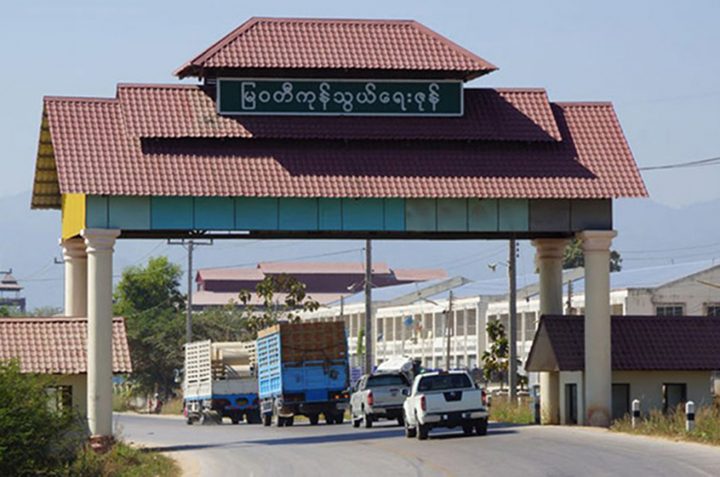22 Oct
Trade between Thailand and Myanmar via the Myawady land border between 1 and 9 October in the current financial year 2020-2021 plunged to US$12.32 million from $31.12 million registered in the year-ago period, according to the data from the Ministry of Commerce.
Following some traders tested positive for COVID-19, Myawady trade was suspended by Thailand until 25 October. However, the business has not entirely halted yet. Myanmar’s external trade through border trade and maritime trade is dropping owing to the COVID-19 resurgence. As a result of this, imported goods are likely to cost higher.
The surge in coronavirus cases in Myanmar led Thailand to close its border area in Maesai in mid-September. Only six trucks are allowed on Tachilek-Maesai bridge per day after negotiations of the two countries, the Union of Myanmar Federation of Chambers of Commerce and Industry released the news on 16 September 2020. Myanmar primarily exports natural gas, fishery products, coal, tin concentrate (SN 71.58 per cent), coconut (fresh and dry), beans, and bamboo shoots to Thailand. Last year, Myanmar increasingly exported corns to Thailand through Myawady border. It imports capital goods such as machinery, raw industrial goods such as cement and fertilizers, consumer goods such as cosmetics and food products from the neighbouring country.
Myanmar generated $1.12 billion from trade through Myawady in the last FY2019-2020, which rose from $969 million registered in the FY2018-2019. Myanmar has seven border posts with neighbouring Thailand — Tachilek, Myawady, Hteekhee, Kawthoung, Myeik, Mawtaung and Maese.
Between FY2016-2017 and FY2019-2020 (as of August), Thailand has been Myanmar’s largest trade partner among the ASEAN states, followed by Singapore and Malaysia.
Thailand accounted for 18.48 per cent of total trade in the FY2016-2017 with an estimated trade value of US$4.2 billion, 19.17 pc in FY2017-2018 with a trade value of $5.07 billion, 40.38 pc in the FY2018-2019 with $5.46 billion and 39.55 pc in the FY2019-2020 (Oct-April) with $3.15 billion respectively, the Central Statistical Organization’s statistics showed.
Ko Htet (Translated by Ei Myat Mon)



